Heads up – Massive Sports Tech Holiday Deals List is Live!!! The Garmin Fenix 8 is $250 off (even the Fenix 8 Pro is $100 off!), the Apple Watch Ultra 3 is on sale, the Garmin inReach Mini 2 is $249, the GoPro Hero 13 Black, DJI NEO, and a ton of other brands/deals, including Wahoo, Oura, Whoop, Polar, Samsung, Google, and more than 100 sports tech deals here!
I’m DC RAINMAKER…

I swim, bike and run. Then, I come here and write about my adventures. It’s as simple as that. Most of the time. If you’re new around these parts, here’s the long version of my story.

You'll support the site, and get ad-free DCR! Plus, you'll be more awesome. Click above for all the details. Oh, and you can sign-up for the newsletter here!
Here’s how to save!
Wanna save some cash and support the site? These companies help support the site! With Backcountry.com or Competitive Cyclist with either the coupon code DCRAINMAKER for first time users saving 15% on applicable products.
You can also pick-up tons of gear at REI via these links, which is a long-time supporter as well:Alternatively, for everything else on the planet, simply buy your goods from Amazon via the link below and I get a tiny bit back as an Amazon Associate. No cost to you, easy as pie!
You can use the above link for any Amazon country and it (should) automatically redirect to your local Amazon site.
While I don't partner with many companies, there's a few that I love, and support the site. Full details!

Want to compare the features of each product, down to the nitty-gritty? No problem, the product comparison data is constantly updated with new products and new features added to old products!

Wanna create comparison chart graphs just like I do for GPS, heart rate, power meters and more? No problem, here's the platform I use - you can too!

Think my written reviews are deep? You should check out my videos. I take things to a whole new level of interactive depth!

Smart Trainers Buyers Guide: Looking at a smart trainer this winter? I cover all the units to buy (and avoid) for indoor training. The good, the bad, and the ugly.
-
Check out my weekly podcast - with DesFit, which is packed with both gadget and non-gadget goodness!

Get all your awesome DC Rainmaker gear here!
FAQ’s
I have built an extensive list of my most frequently asked questions. Below are the most popular.
- Do you have a privacy policy posted?
- Why haven’t you yet released a review for XYZ product you mentioned months ago?
- Will you test our product before release?
- Are you willing to review or test beta products?
- Which trainer should I buy?
- Which GPS watch should I buy?
- I’m headed to Paris – what do you recommend for training or sightseeing?
- I’m headed to Washington DC – what do you recommend for training?
- I’m from out of the country and will be visiting the US, what’s the best triathlon shop in city XYZ?
- What kind of camera do you use?
-
5 Easy Steps To The Site
In Depth Product Reviews
You probably stumbled upon here looking for a review of a sports gadget. If you’re trying to decide which unit to buy – check out my in-depth reviews section. Some reviews are over 60 pages long when printed out, with hundreds of photos! I aim to leave no stone unturned.
Read My Sports Gadget Recommendations.
Here’s my most recent GPS watch guide here, and cycling GPS computers here. Plus there are smart trainers here, all in these guides cover almost every category of sports gadgets out there. Looking for the equipment I use day-to-day? I also just put together my complete ‘Gear I Use’ equipment list, from swim to bike to run and everything in between (plus a few extra things). And to compliment that, here’s The Girl’s (my wife’s) list. Enjoy, and thanks for stopping by!
Have some fun in the travel section.
I travel a fair bit, both for work and for fun. Here’s a bunch of random trip reports and daily trip-logs that I’ve put together and posted. I’ve sorted it all by world geography, in an attempt to make it easy to figure out where I’ve been.
My Photography Gear: The Cameras/Drones/Action Cams I Use Daily
The most common question I receive outside of the “what’s the best GPS watch for me” variant, are photography-esq based. So in efforts to combat the amount of emails I need to sort through on a daily basis, I’ve complied this “My Photography Gear” post for your curious minds (including drones & action cams!)! It’s a nice break from the day-to-day sports-tech talk, and I hope you get something out of it!
The Swim/Bike/Run Gear I Use List
Many readers stumble into my website in search of information on the latest and greatest sports tech products. But at the end of the day, you might just be wondering “What does Ray use when not testing new products?”. So here is the most up to date list of products I like and fit the bill for me and my training needs best! DC Rainmaker 2024 swim, bike, run, and general gear list. But wait, are you a female and feel like these things might not apply to you? If that’s the case (but certainly not saying my choices aren’t good for women), and you just want to see a different gear junkies “picks”, check out The Girl’s Gear Guide too.

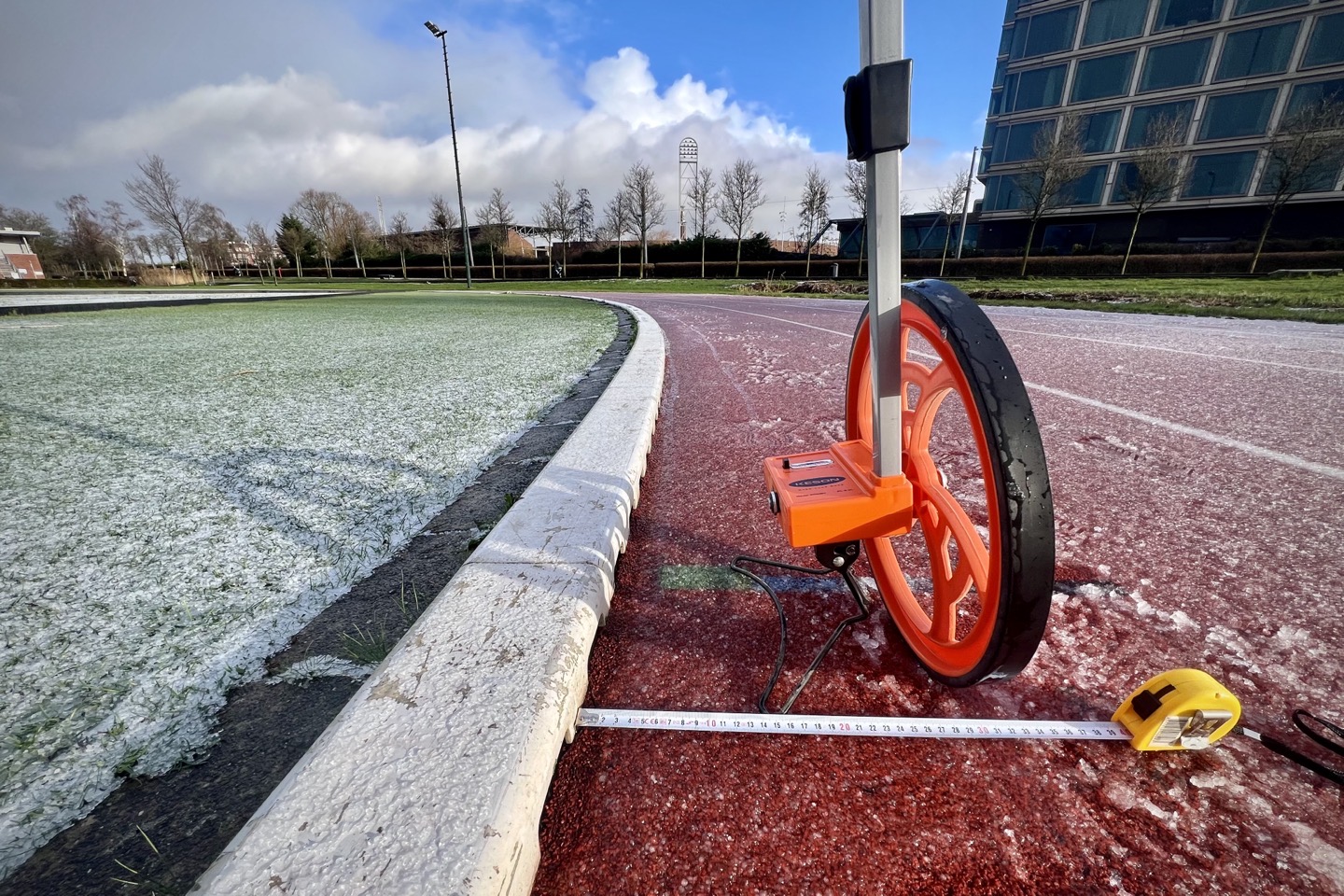
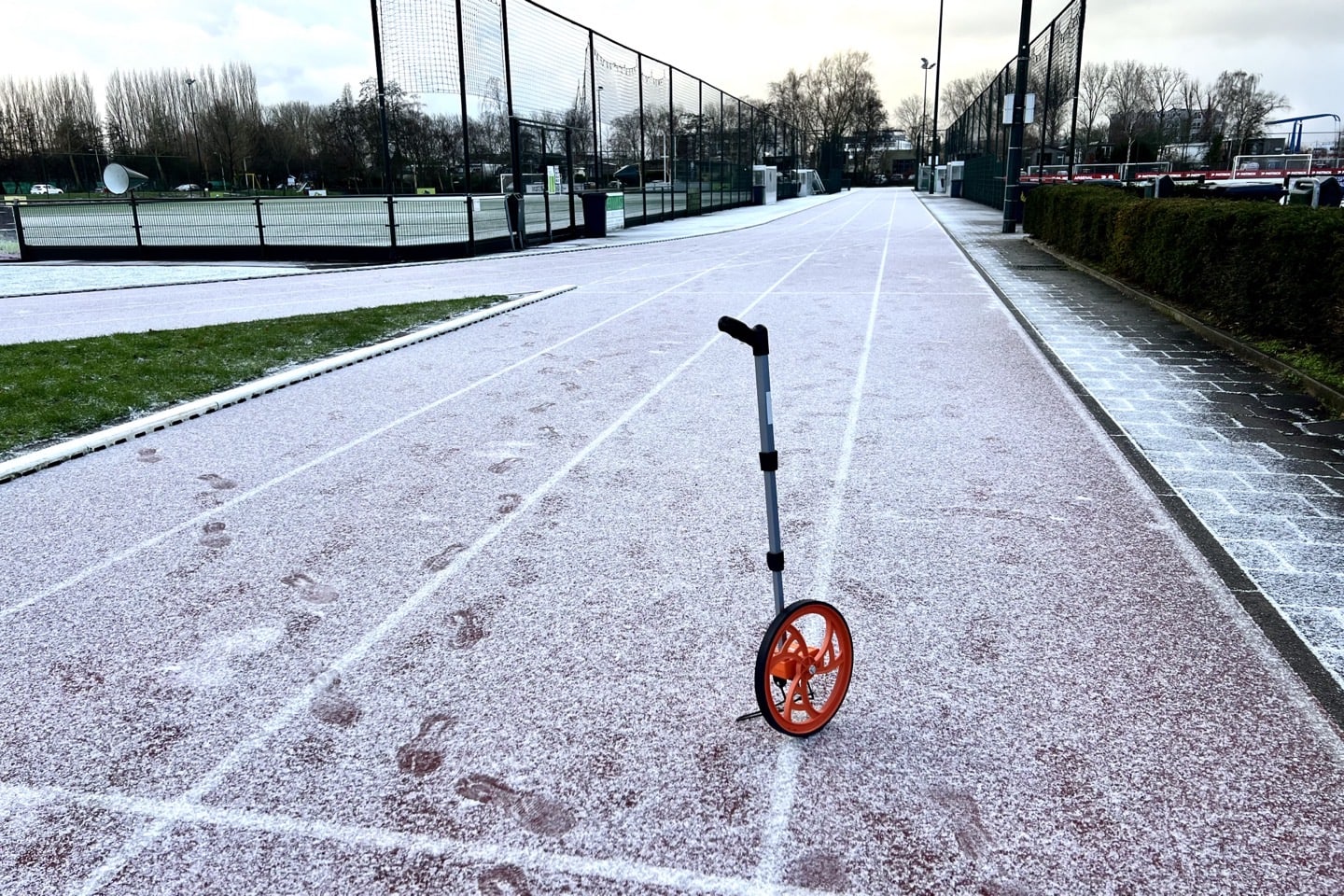
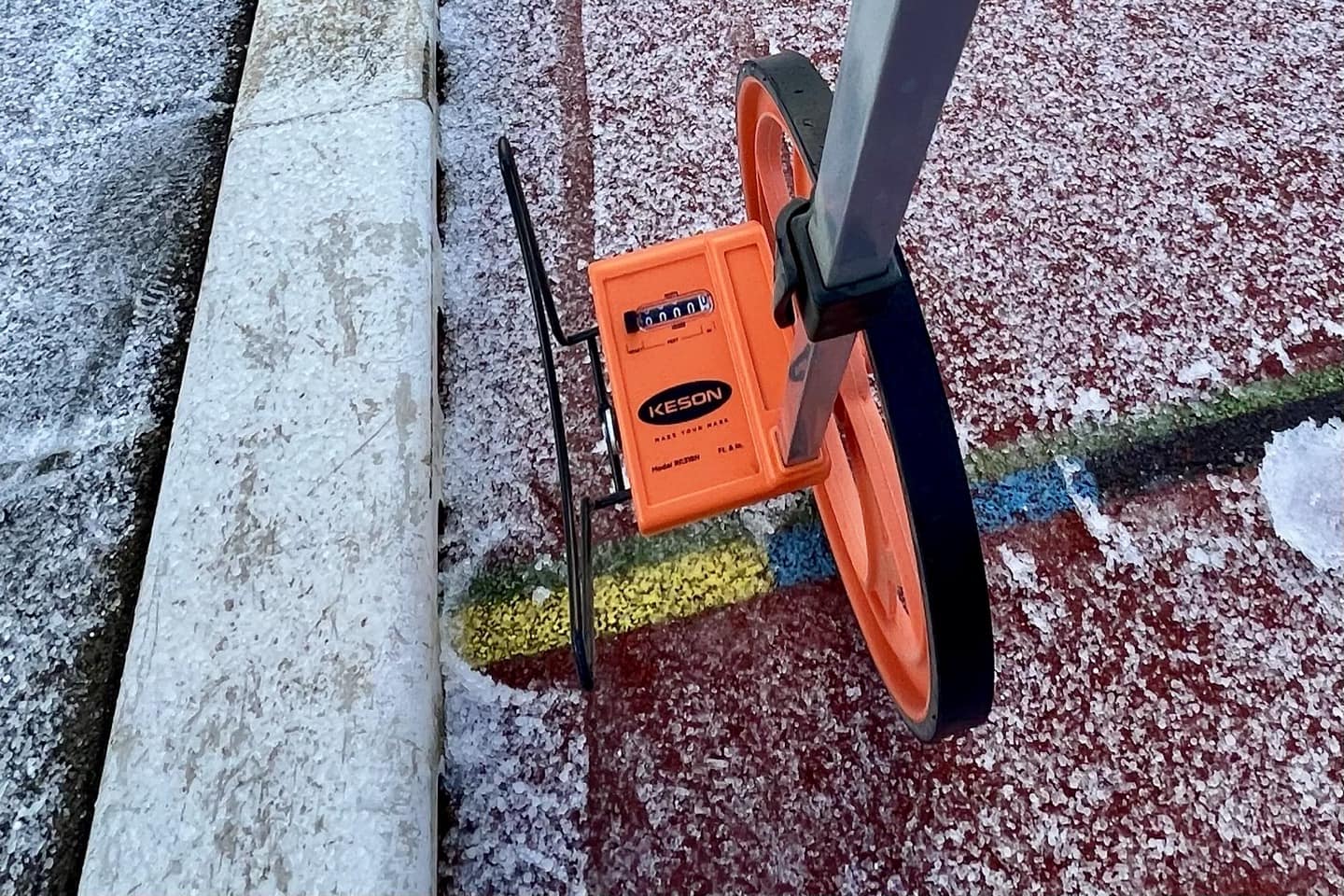
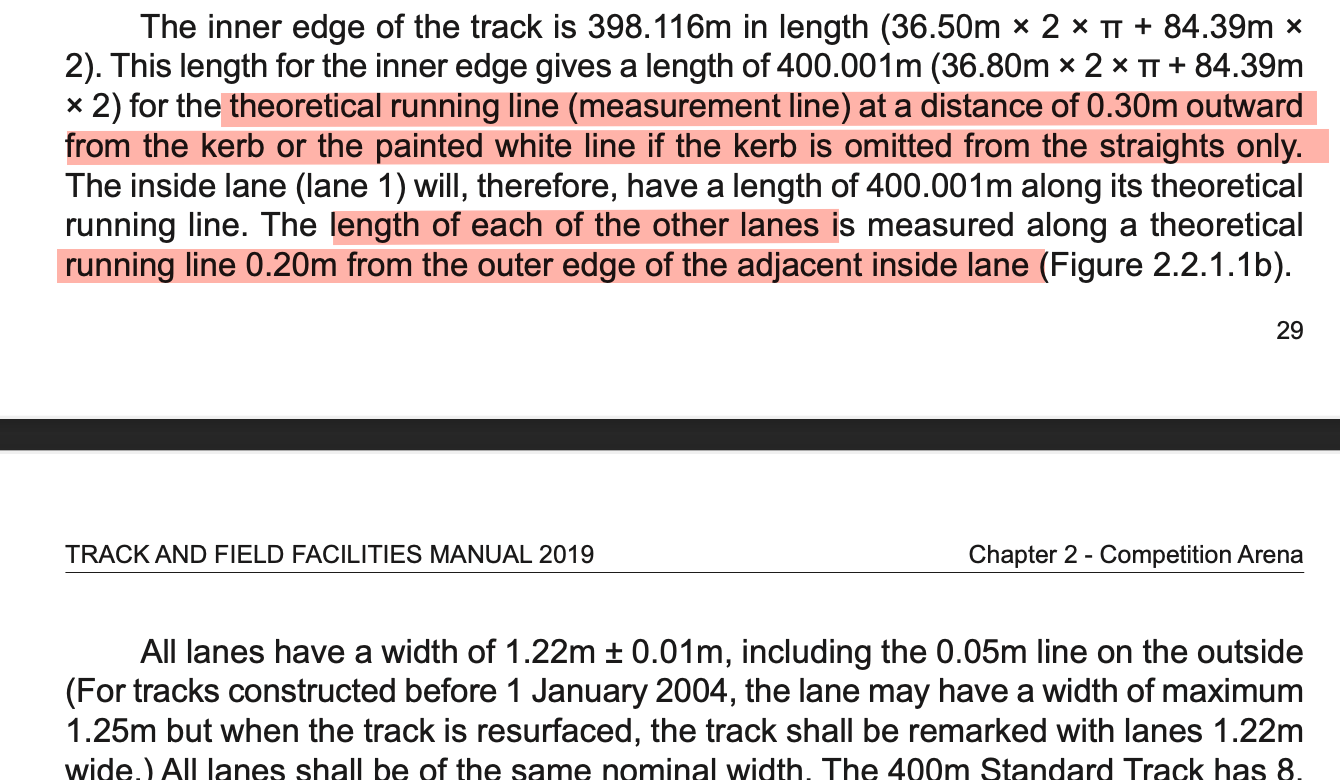
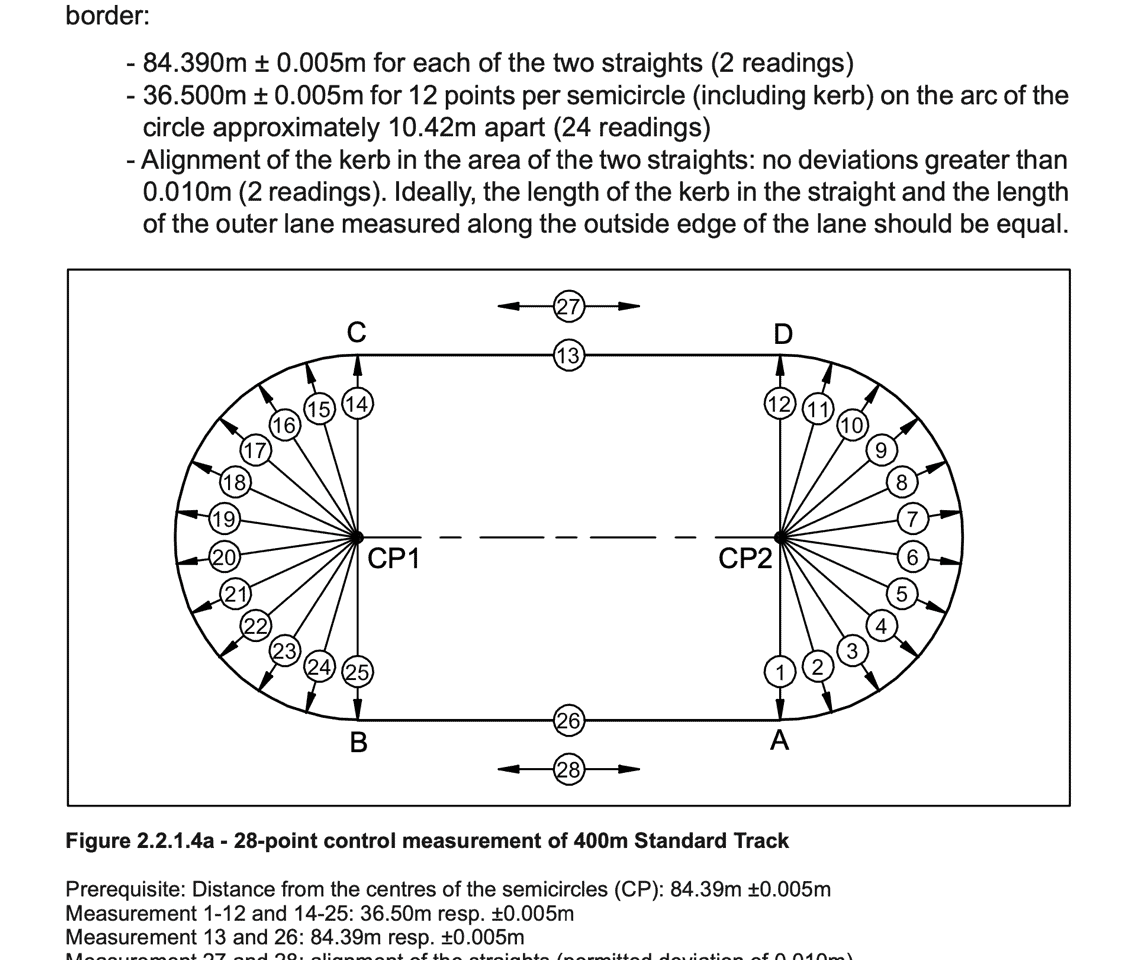
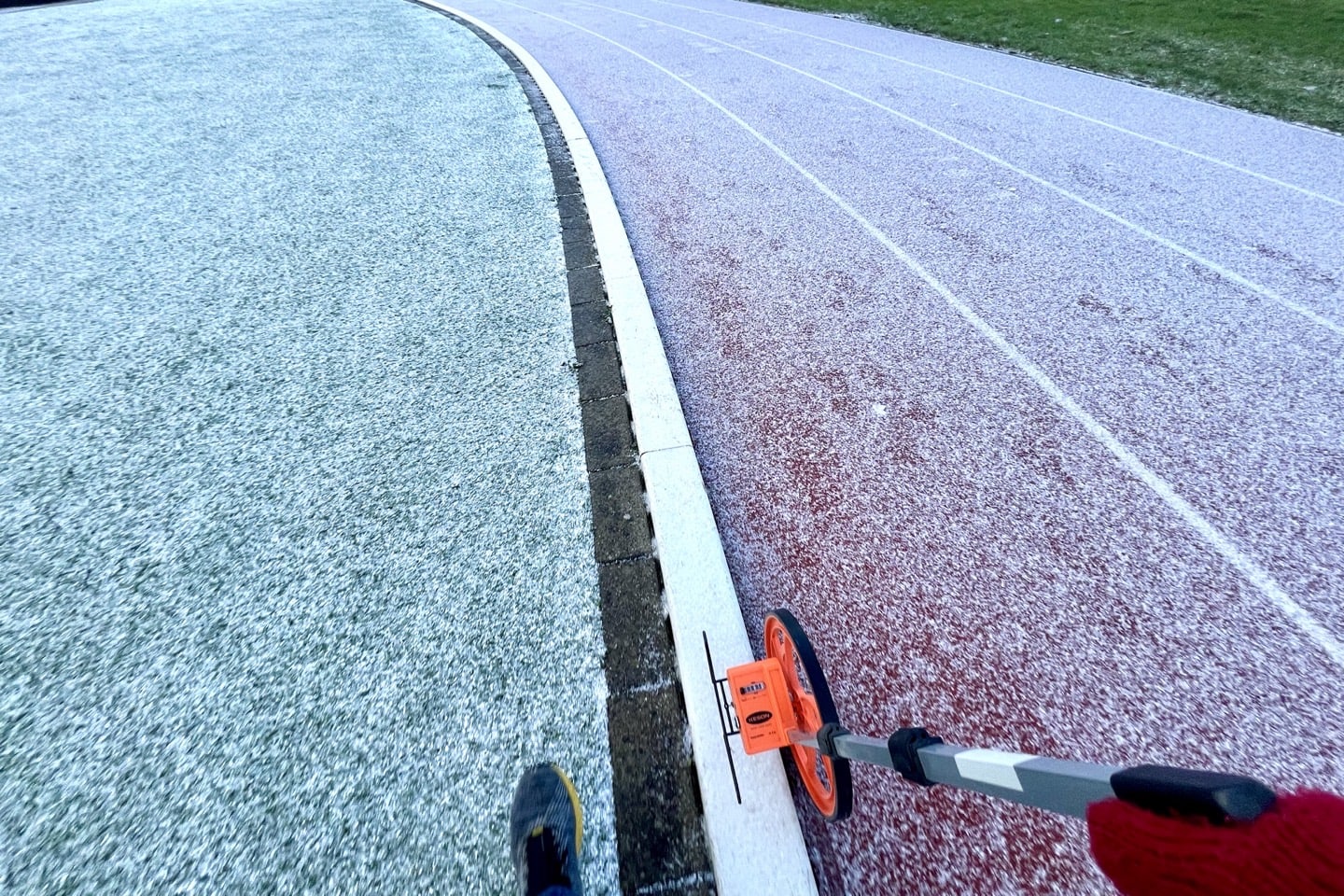
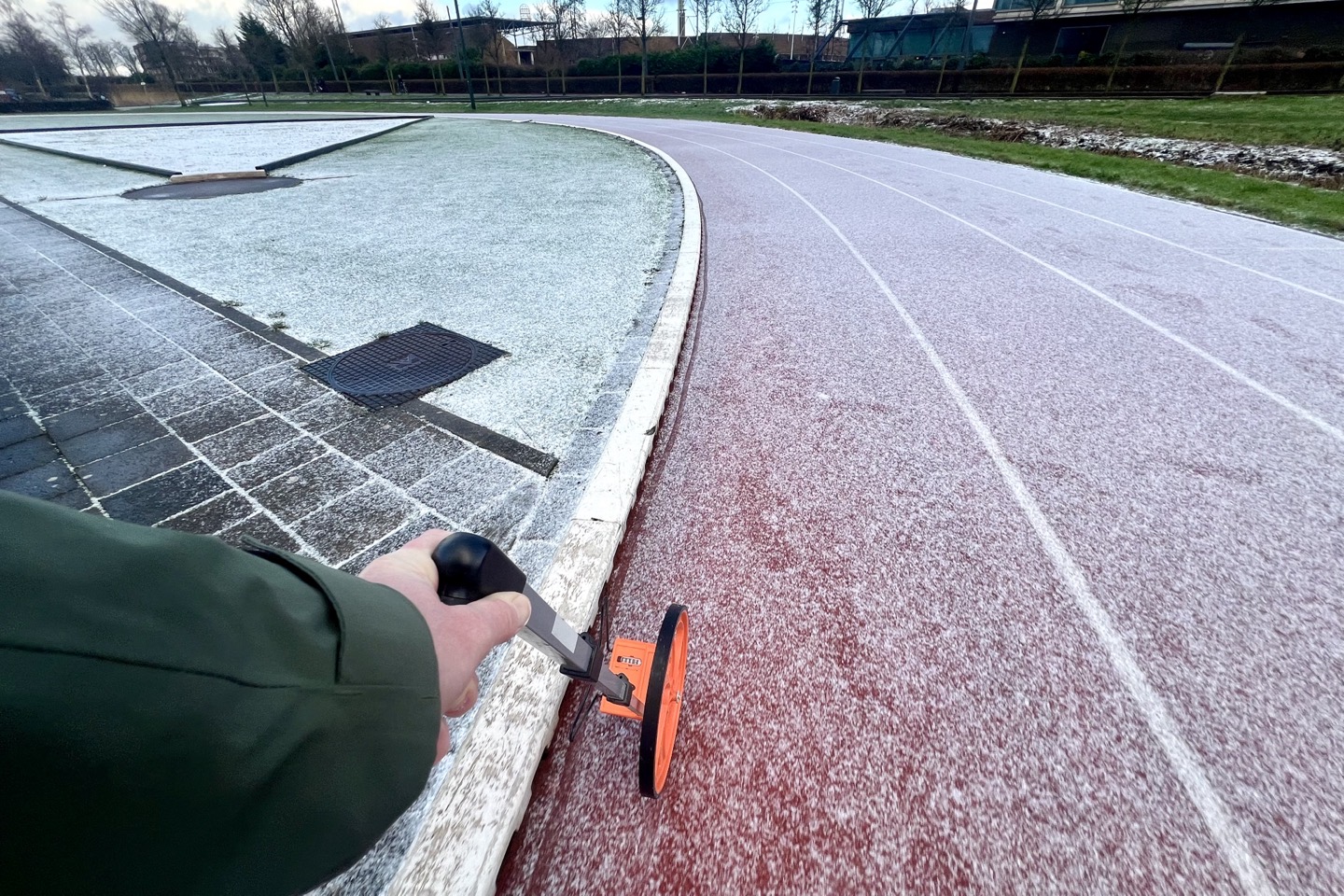
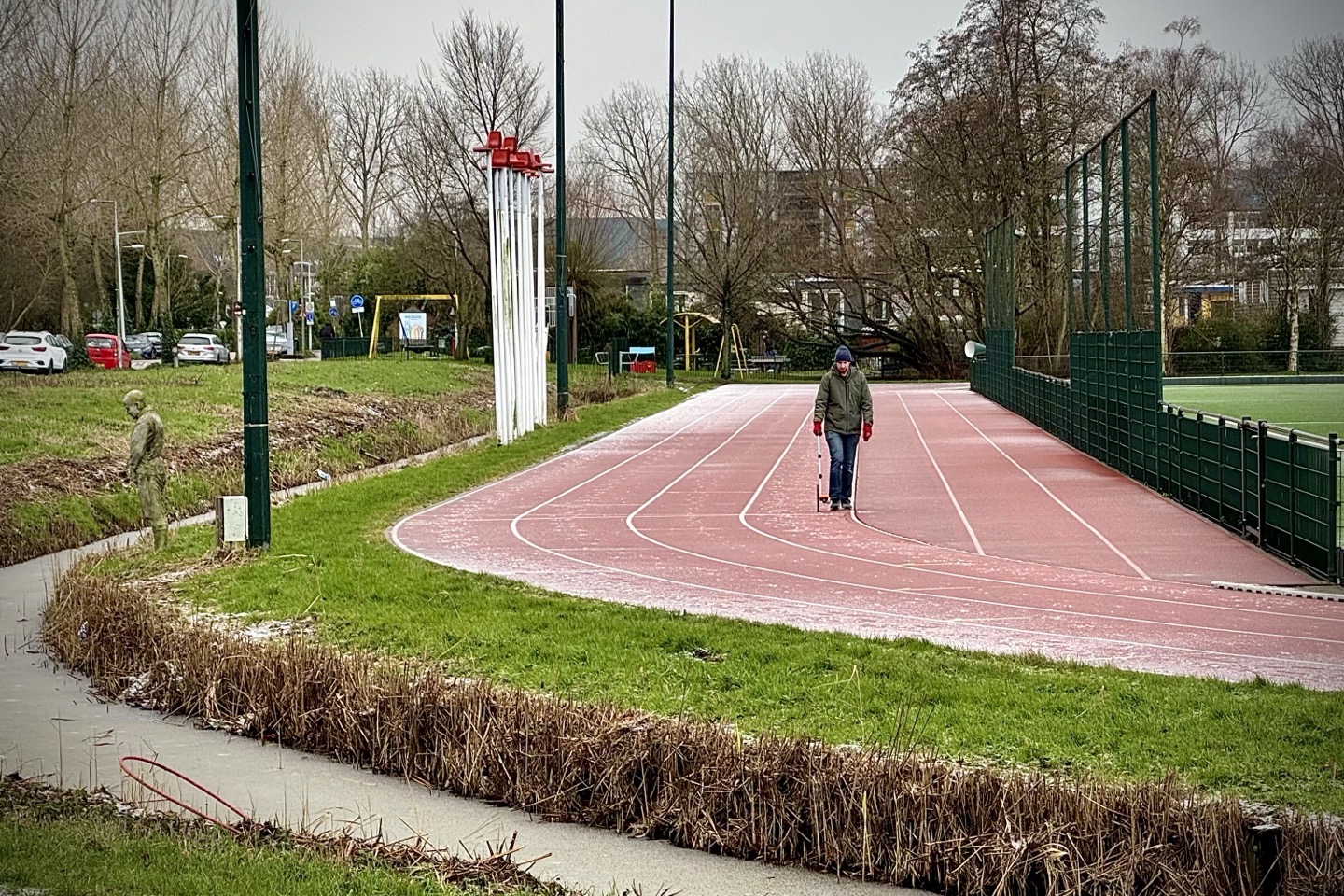
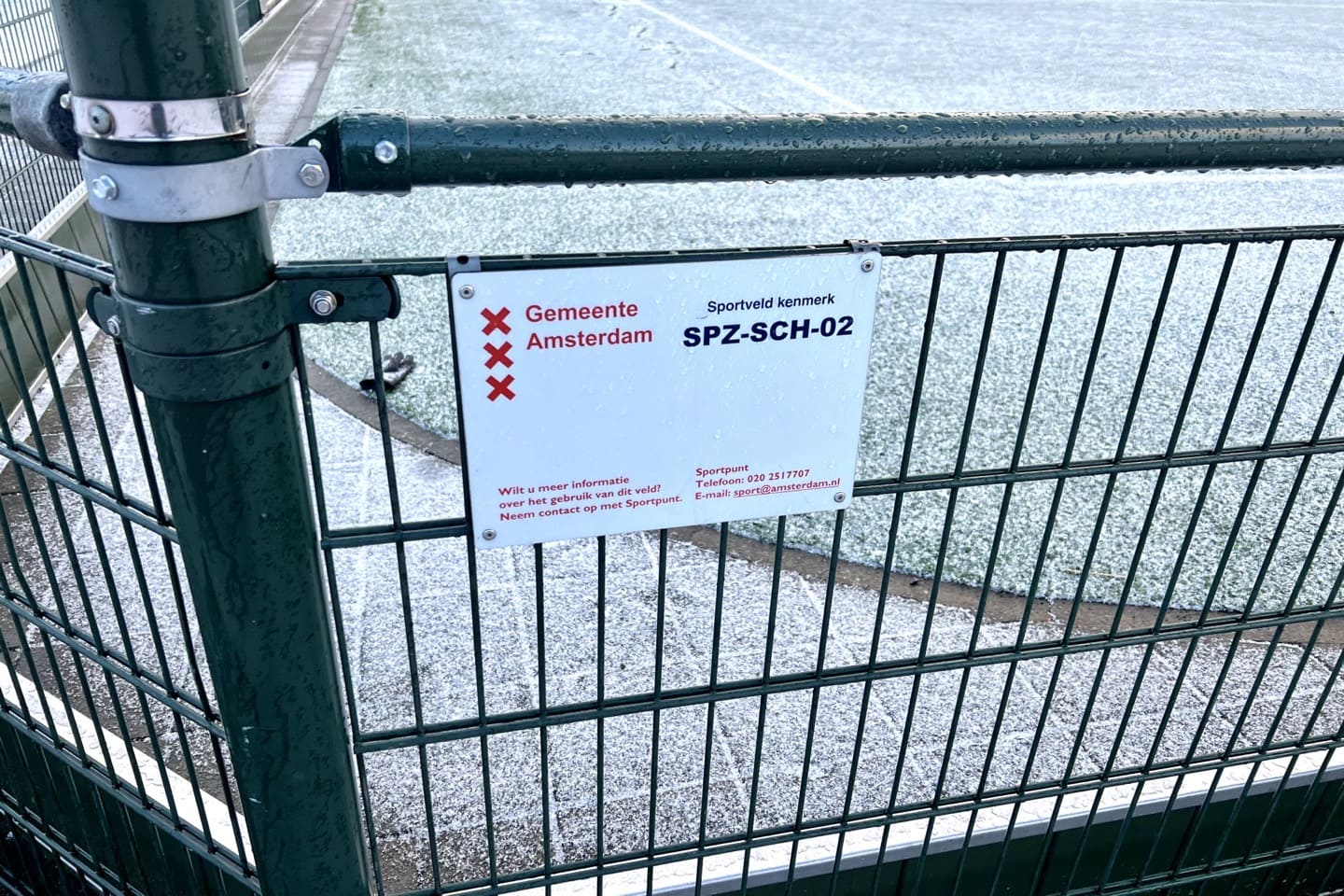

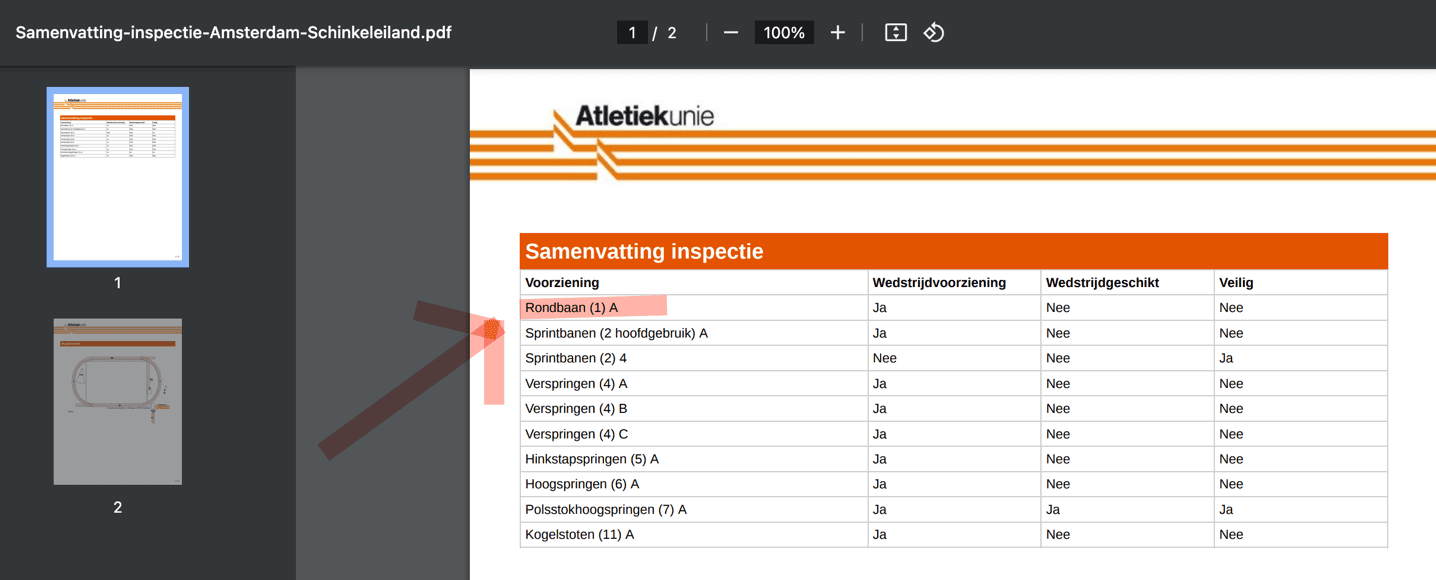
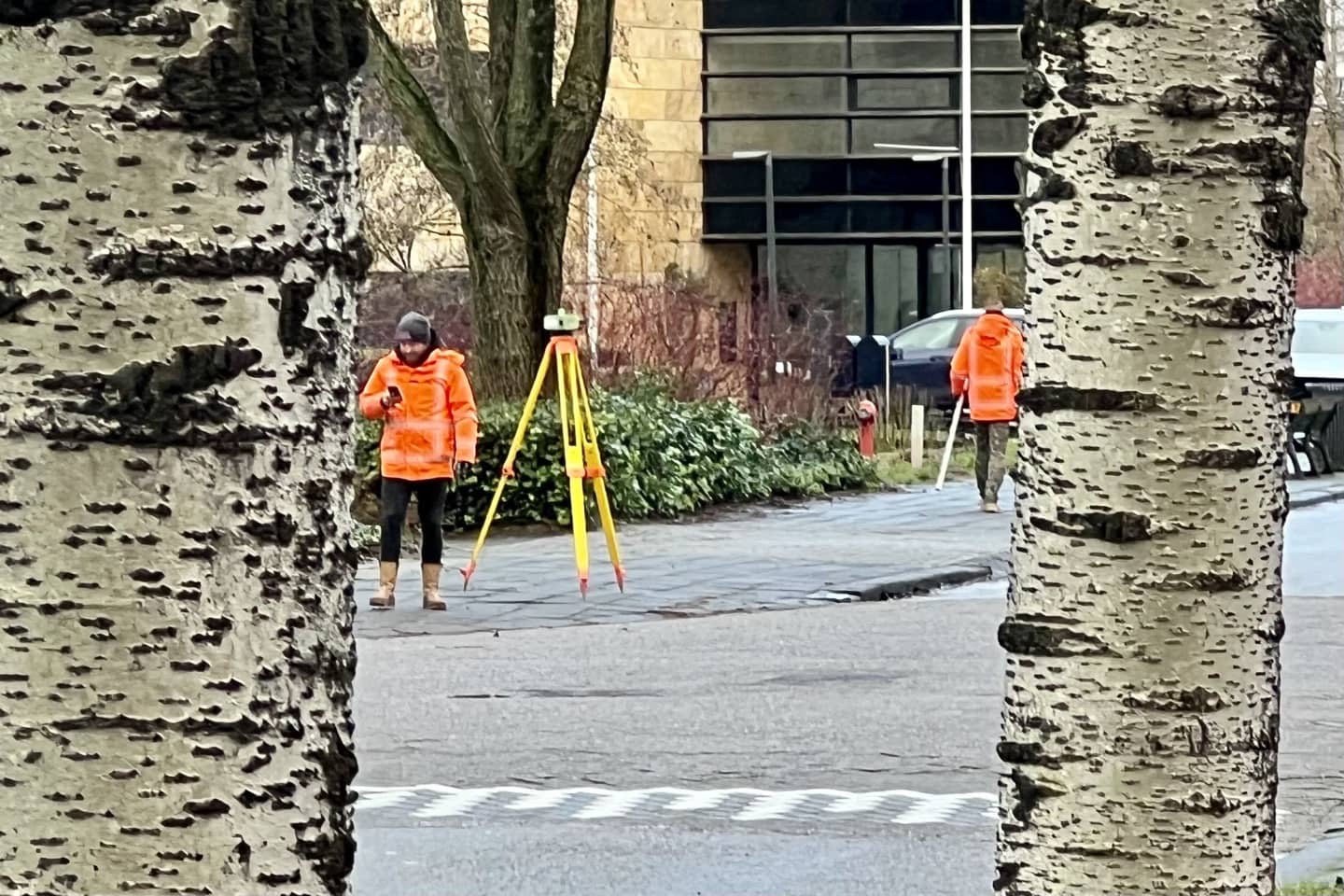

















That 1m could easily be measurement wheel error. Those things also need to be calibrated on regular basis.
You could have attached a 30 cm ruler to your measuring wheel, to make it more easy to keep the right distance. I mean if you want to get geeky you may as well go all the way.
Yeah, I actually thought about that.
The main reason I didn’t was that I didn’t want it to keep catching/bouncing on the ‘curb’ on the inside, and then cause my wheel to bounce off at a weird angle. That said, I probably could have mounted it up higher and been clear.
You need to find and buy supporting wheels that offset exactly 300mm 😉
And then mount them, obviously…
This is the type of nerdy content I come to this site for. Tough I agree with andre that you could have taken it a step further and attached a 30cm rod at a 90-degree angle to maintain distance :)
There is a reason, sir, that we trust you.
I am looking forward to the update after the Amazon guy delivered your brand new theodolite ;-)
About $1,300…hmmm link to amazon.com
About the same as I paid for the underwater pressure chamber for testing watches.
Both probably equally useless long-term. :)
How would you use the laser measurement to measure the curved portions of a track …
This is actually covered in the IIAF manual, for validation of points along each curve. :)
Go check with the civil engineering folks at the nearest university… Those always need fun stuff to measure for practical lessons. I guess they would be happy to measure the track for you. Or even make it into an exam. Maybe students would not like you afterwards though…
By any chance, do you know if any company will add the track mode for running tracks outside the 400m-size?
I train on a 250m-track :)
Same problem for me here, with a… 333m track :-)
I just realized, that even though the 400m track is metric (doh!), lane width seems to be exactly 4 feet.
Brilliant work, Ray.
Man in 6th photo; is he fishing or having a comfort break? link to media.dcrainmaker.com
He’s definitely working to warm the water.
Decades ago, when we (a team of distance runners) hosted the track meet for the Portland Rose Festival, we panicked when we discovered that the track didn’t have lane marks for the 400 meter hurdles. Somehow we knew the position of the hurdles on the inside lane and of course we had the 7.7 meter stagger of the 400 m start lines. Some quick calculations allowed us to determine how the stagger between the hurdles would decrease as we progressed around the corners. (Note that the stagger only changes on the corners, not on the back straightaway.) Using a measuring tape we rushed to set up the hurdles. Miraculously, everything lined up as we made it around to the final straight. The 400 m hurdles started a few minutes late, but none of the competitors complained about the spacing.
Nice!
The field marking document is amazing, btw: link to worldathletics.org
When we were first looking for space for the DCR Cave here in Amsterdam, we tried to get one of the various field-level business spots at Olympic Stadium, but they were all taken at the time (there about 40 of these, that extend basically from the ‘outside’ of the field to the ‘inside’. Super cool, and companies like Brooks and just lots of Physio-type practices/etc have offices there. Brooks would be the most ‘known’ brand, most are just random small companies. Later one came available, but we invested too much into the current DCR Cave build-out to want to move.
In any case, if I had a track-side office, I’d definitely get this diagram blown-up big and put on a poster, super cool. Heck, might still do it.
In 2018 I did that exact thing, having a 98cm x 149cm poster printed, mounted on foam board, for about $100US. The next year the diagram was updated to reflect the new rules regarding sprint relay exchange zones. So, while it is out-of-date, it certain covers a lot of wall area!
Looks like you typoed IAAF to IIAF (Iran air force?), but actually IAAF is WA (world athletics) since 2019
Thanks!
Measurements are fun:) I remember how I spent half a day measuring a “track”, were nor the straight lines were equal. On standard tracks I used to do validation runs on the inside line of line 2. It eliminates keeping the 20 or 30cm offset, very easy to follow. 405.78cm; See: link to help.stryd.com
I was reading the doc and thinking the measurement of the line between lane 1 and 2 should be exactly consistent (assuming standard lane width) and measuring on that line would make life so much easier. Thanks.
And on that note, Report back soon Ray!
Yeah, I don’t entirely understand Stryd document on the whole lane 1 thing, because 30cm is actually quite easy to run, and pretty much exactly where you’ll run if you simply ran around the track (especially if Stryd is on the left foot, then it’s closer to the 20cm marker).
Anyway….
Yes, this is the “easiest” way to do it, use the line between lane 1 and lane 2, and measure there. It should be exactly 406 meters. Of course there’s still margin for variation, since the line itself is relatively large, but still much easier to run or measure while following the line. But then I guess one would also have to make sure the lane width is right. :D
@ István
not a half day at one time, but if I add the time spans I was spending with measuring the length of the non-standard tracks and street loops I use for running I am over 24 hours definitely.
I made the calibration of my Stryd on the running track of Budapesti Honvéd in late 2022 just after it had been validated for international athletics events.
So by now I know the lengths of 3 non standard tracks in neighboring cities, and although I am highly critical with everything, but Stryd as a distance measurement tool is really gorgeous.
Precise, I mean.
You just need to add another wheel to the end of the ruler, so you can just roll along the curb. :-)
Why wouldn’t you wait a day until there wasn’t ice/hail? You admit there was slippage (Wasn’t this a Seinfeld plot point?), which would have invalidated any measurements.
15 years of rubber shrinkage on that tyre could also knock your measurement off.
And cold weather shrinkage…
Heh, mount some rod to the upper part of the wheel and attach the laser pointer on it, with red dot beaming on the ground exactly 30 cm from the edge of the wheel. :)
This is the first article I’m reading as an official supporter and I could not be more happy for my decision!
man, you are the greatest!
So who else felt compelled to fire up their satellite maps of choice to see exactly what was meant by “some of the secondary faux lanes on the straightaway (used for funnies)”? But now I know!
I enjoyed your entire article, but this part is absolute gold:
Lane 1: 400.0m
Lane 2: 407.7m
Lane 3: 415.3m
Lane 4: 423.0m
Lane 5: 430.7m
Lane 6: 438.3m
Lane 7: 446.0m
Lane 8: 453.7m
I’m afraid this is wrong. As the first line is measured 30 cm from the inner edge (curb is actually mandatory in bends) and other lines are measured 20cm from inner edge, the difference in length between line 1 and line 2 is 7.04m, while all other differences are 7.66m. (10cm x 2 x pi = 63cm).
Also check 2nd line (marked 400) in Table 2.2.1.6a – Staggered start data for the 400m Standard Track
on page 38 in Track and Field Facilities Manual 2019 Edition – C.pdf
Correct numbers are here (add 400)
07.037
14.703
22.368
30.034
37.699
45.365
53.030
thank you for posting this. I believe you are correct, but why do so many websites have this other information? I assume they just made their own calculations, and didn’t read the official regulations about running line being 30cm on first lane, then 20cm after that? Have I missed something and they are correct? I don’t think so, but frustrating so many have these incorrect distances. Doesn’t matter much over short run, but if trying to measure a really long distance run around a track in different lanes it is certainly different.
Do you know how they get the values of Table 2.2.1.6a. I’ve done the math and the values by math are different by 0.001 from the Table. I supposed it was a ’rounding down’ reason, but it isn’t.
I know it’s only 1mm, but I’m so curious as to why.
Can’t believe you weren’t using a measuring stick in each hand whilst riding a road bike with a speed/distance sensor on both the front and back wheel (PowerTap G3).
This is the DCR we’ve come to expect.
Have you also considered using your rolling pin and counting the number of full rotations?
Your measurement could be less because of the outside temperature. Before starting lap measurement, you should do a calibration for your measuring wheel with a metal tape where you measure 100m (or better 200m) in a straight line and then measure it 3x times with your wheel and find out precisely how much is 200m for your wheel. But better do it in more ‘neutral’ conditions to avoid need to adjust your measurements for the weather conditions.
How to calibrate a metal tape :P. There is probably a shorter thread in winter than in summer :P.
I like how the name of your wheel is ICESON and you used it on ice.
Well “IC” looks like a K in the photo.
I now feel obliged to post a link to this little gem from 1998.
link to youtube.com
You’re welcome! (Sadly, they cut off the best bits at the tail end of the skit, but you get the general idea.)
And .. you could also measure some other track that is not disputed and use that to “calibrate” your wheel… That would be my approach to know how well the wheel measures. But .. I don’t think I would be brave enough to measure this seeing the hail coverage :-)
That would exactly be my thought, since the Olympic stadium is next door and I believe you had access to it. I’m really curious now what the measurement of that track would be under the same circumstances
Measure right up against the line. The length any distance out from that will be that plus 2Pi the added distance out. e.g. At 20cm out the length will be an additional 1.257m. At 30 cm out, the length will be an additional 1.884m. etc. Thank Archimedes.
Kind of misses the point. If the track is really ‘out of spec’ then the radius for the curved sections will likely be off. In fact, even tracks with an accurate length do not necessarily have correct or consistent radia – hence, the requirement in the WA manual for multiple measurement points for the curved sections.
… and for when you decide to get accurate out in the real world,
link to aims-worldrunning.org
When measuring Olympic and World Champs Marathons we add 1m per km to allow for the inevitable corner cutting. Funniest thing was a whole TV show done around our measure of the Sydney Olympic Marathon where we measured and told the Olympic Games Organising Committee that the marathon was spot on, but the track was 399.6m long… as it was a road race we left the 1m fudge factor in… it gave the organisers a heart attack!
PS – those wheels are close, but rarely, if ever, accurate.We use a gadget called a Jones Counter. Accurate to millimetres, but it takes a bit of work to calibrate. Details in the link above. :-)
Yeah, the Jones Counter is good for going long distances. Most tracks, however, don’t take kindly to people riding bicycles on them (despite the fact that it won’t hurt it…).
That said, one of the catches with the Jones Counter is ensuring accounting for both the exact pressure in the tire (with a roll-out), but also tire deflation over a time period (depending on how long the course is). It’s one of those things that fluctuates (downwards usually) during a ride far far more than most people realize, till you have a tire pressure sensor and see it in real-time. Again, per proper procedure, you should be doing both a before/after check (and as you noted, that site explains how to do it properly/etc). But…I suspect a lot of smaller/medium size races never bother, to do either, and have it written down on a sticky note instead. ;)
(Also, FYI, the Jonescounter link on that site has an error in it, set for HTTPS, when the actual Jonescounter site doesn’t support HTTPS, just HTTP, so it fails.)
Wow, that Jones counter looks very similar to the Huret odometer I used to use about 40 years ago. You had to take the front axle out to mount it, and then a little pin mounted to a spoke hit a gear and turned it. Was pretty accurate as I recall, although I’d guess not as accurate as the Jones counter.
I enjoy that the certification has an expiry date. “Due continental drift we can only certify this track at 400m for the next two years!” ;)
Thanks Ray. Stuff like this is the reason I love this site!
It’s in the rule books how far from the rail (if there is a rail/curb) or inside line of lane 1 (if there is no rail/curb) needs to be exactly 400m. And any organization responsible for having an accurate track is going to include that in the specifications for contractors who build and mark the track. Expectation is that the contractor will get it right to get paid and get a reference so they can do other tracks.
It’s unknown what percentage of people who use tracks read those rulebooks.
1.0%, 0.5%? 0.25%?
Really interesting the methodology measuring the field, many details that can easily burn you. Though we must not forget to enjoy the running wherever we are.
Love this! I also use that track once week so was riveted! Glad my workouts for the last 5 year’s haven’t been coming up short! 😜
The testing and consumer stuff is invaluable, but it is the content like this that keeps the love alive! It’s going to take a lot of control not to do this to my local track…
Cause America, Ray don’t forget we use imperial too, at least for distance. My wheel is imperial, but both types are in stock at the local shops, as an aside my rabbit hole is Coros’s inability to measure my runs in imperial and show temperature in a language I understand, every other “proper” watch does do it.
No, no. We use statute, units chosen by our democratically elected legislatures. They use French Imperial, units imposed largely by conquest.
These days your local track is probably 400m, though.
This looks like a cool, rabbit-hole, type of newsletter.
Several years ago I discovered the problem with measuring wheels – they can slip and if they bounc (even a little), the measured distance will be inaccurate. Also, when seeking the precision you sought for the Amsterdam track, the measures should have been completed on a dry track AND the wheel’s accuracy should have been pre-confirmed.
Thanks for what appear to be really cool topics.
Ray knows how to have fun!
Man. Love it. This is the most epic response to a YouTube comment troll (to be fair, maybe not a mean troll, but . . . still, you know, that guy) ever. (And I say that as someone who has inadvertently been that guy; no shade thrown to the trolls.)
Love the article! I’ve definitely been down this rabbit hole, albeit for different reasons, learning how courses are USATF and World Athletics certified both for tracks and road courses (and learned how to look them up on the USATF site!).
Fun times, and I hope your new year is going great!
Awesome work Ray !
I was by turns intrigued, entertained and amused by this article – love your attention to detail and determined empirical approach ! Laser level gag was the cherry on top
best regards
John Porter
Blue Mountains
Australia
Just measure on the line and do some math for 20cm and 30,cm on the curves.
No need to take the wheel out multiple times.
Does not if the track is not exactly in consistent and correct shape (eg the corners are not consistent semi-circle but slightly oval/have changing radius/etc) – which is pretty much the point of the post.
It seems absolutely nuts that the distance is 20-30cm from the actual line given that an athlete often runs within mm of the line meaning they don’t run 400m. Is that correct?
I mean, I literally quote and screenshot the document on how tracks are measured, as well as link to it.
The left foot can be just millimeters from the line, but his center of mass will surely be 20-30cm to the right, that’s why this adjustment exists.
The youtube song at the end is really cherry on the top of this post! Thank you DC!
” Nearby, there were some workers with super fancy laser measurement equipment”
It looks very much like a Leica DNA 03 – a digital level instrument with no lasers involved.
😃 so crazy, but I totally understand your reasons. And to be honest, now I’m thinking about measuring the track I’m running most oft the time. 😅
An exam with “must show your workings”. Not much credit for getting to 400m as the answer on this one.
But did you ask the original YouTube guy why he thought the lane wasn’t 400m? What’s his evidence?
This is also my weekly track \o/ As a different kind of person, I did not care about the exact length. But indeed learned something from your content and commitment to be right/sure.
No need to measure track at 30cm offset. You can imagine track to be a polygon – some lines + some arcs, basically we just need to know it is a convex shape, then after applying offset transformation to it, that is infact equal to using a thick round brush sliding along its border – all lines will be transformed to same lines with offset in certain direction, all existed curves due to same idea will be offset to same curves. Between offseted lines or curves there will be lots of empty spaces – but those empty spaces produced eventually by your say thick round brush, and will be summed up to just a circumference produced by that brush sliding around point – so it is of 30cm radius. It will work for all convex surfaces even at earth scale, maybe you remember old school task what if we add a 1 meter length to a rope that covered entire earth – will some cat slide into appeared hole.
For concave shapes this wont be so and it is easy to proof on paper.
So taking your first measurements as most precise we can calculate track distance as 397.764m + 2*Pi*0.3m = 399.648m so my conclusion that indeed track is fine.
Hello Ray and fellow runners,
A quick question about tracking a run on a stadium. I own an old Fenix 3 (but I may upgrade in the future). My question is, how do you track distance on a track? GPS doesn’t seem to be the best option for that purpose. I know that there probably is a “track mode” in the new models but from what I have read that seems to only work on 400m and I sometimes run on 200m track or want to race 1000m intervals.
Isn’t there an option similar to swimming where you would just enter a distance that you are running and by hitting the lap button you would get the time for the set distance?
Thank you so much ;-)
I think you have lane 1 correct, but all those other distances you quote I believe are incorrect. Not sure which rabbit hole you were in? I think mine must be different. Shouldn’t the lanes be:
Lane 1 400.001
Lane 2 407.038
Lane 3 414.704
Lane 4 422.369
Lane 5 430.035
Lane 6 437.700
Lane 7 445.366
Lane 8 453.031
Do you know how they get the values of Table 2.2.1.6a. I’ve done the math and the values by math are different by 0.001 from the Table. I supposed it was a ’rounding down’ reason, but it isn’t.
I know it’s only 1mm, but I’m so curious as to why.
(I’ve posted this same reply above, to another comment, but I figure you’ll be curious).
Do you know why? (or did I get my math wrong)